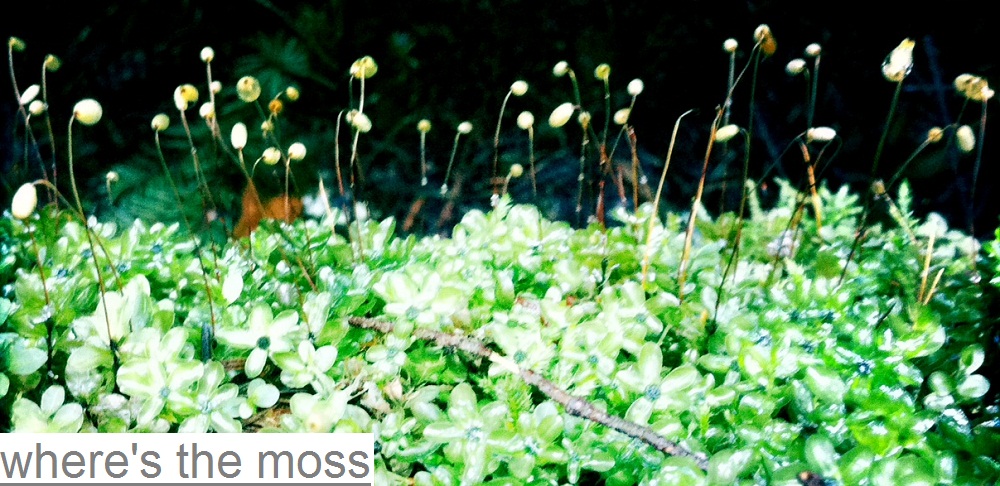I drove over the mountains this week; coast to the Rockies. On a long but beautiful journey, Melissa and I watched the shift between biogeoclimatic provinces, pointing out the first ponderosa pine as we gained easterly elevation towards the interior of BC.
I was travelling to go backcountry skiing, to work on a fauna species identification list, to soak in the Lussier hotsprings, and to give a presentation to a group of interpreters in Banff.
I talked about mosses; their ability to amaze me with their intriguing habitat requirements, their strange and unusual distributions, and of course, their richly detailed beauty.
Pointing to a simplified and well labeled drawing of a moss structure, I differentiated between the leafy vegetative structure found running along the forest floor in carpet-like clumps, and the more obscure reproductive spore producing stalk and head capsule. mosses produce this reproductive structure when conditions and life-cycle timing is appropriate, releasing small dustlike spores when the capsule is opened or disturbed. these microscopic spores travel through the forest on little gusts of air and winds to find themselves settling on the gnarled bark of trees, the fissures in moist rocks, the surface of decomposing nurse logs.
Mosses of the genus Splachnum are, however, very choosy about where they will grow. A relatively rare moss found in the northern spruce forests of western Canada, this variety grows almost exclusivity on moose droppings. Taking advantage of the nutrients in the ungulate waste, this little plant has had to develop amazing adaptations to ensure that its little spores are successful in locating its preferred habitat.
 |
| Splachnum moss |
You will notice in this picture that Splachnum's spore capsules fan outwards in the shape of miniature parasols; these are covered in sticky little moss spores. Imagining a small pile of moose droppings with these tiny parasols fanning outwards, I showed my audience an approximation of this image in the form of a pile of brownies adorned with cocktail umbrellas.
 |
| moose poo with Splachnum |
I challenged my audience to imagine their hands as large flies, attracted to the sweet-smelling nutrient potential of the moose dung. Buzzing around they may, as they try to land on the dung, find themselves brushing past these little umbrellas. Perhaps they would rest for a moment atop the moss sporophyte, inadvertently attaching small moss-spores to their fly-feet. Acting as a transportation mechanism through the forest, the next pile of moose dung that these flies are attracted to would be propagated with Splachnum spores, completing this moss' beautiful little life-cycle and adding to the commentualistic community of the forest.








